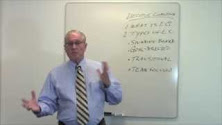 The Three Laws of Performance
The Three Laws of Performance By Steve Zaffron and Dave Logan (Jossey-Bass, 2009)
Of the many books written about change, my thinking and executive coaching has been most impacted by the book
The Three Laws of Performance by Steve Zaffron and David Logan (2009). The book’s basic premise is that you can change how people (and organizations) perform by understanding the role language plays. I strongly suggest that if your organization is feeling a little sluggish, sometimes uninspired, or even stuck, you read this book. Next, get relevant folks to read it, and then get them all in a room to talk about how it can apply directly to your organization. If people are honest and want a different future, then watch your organization’s world change!
THE TWO WOLVES
Before outlining the key sections of
The Three Laws, I’d like to begin with an old
well- known Cherokee story that the authors tell in the later part of the book. I especially like this story because I think it summarizes, in a story, the heart of this book Also, I could see myself having this conversation one day with Jake Diaz, my own grandson:
An old Cherokee chief is teaching his grandson about life:
“A fight is going on inside me,” he said to the boy. “It is a terrible fight between two wolves.
“One is evil—he is anger, envy, sorrow, regret, greed, arrogance, self-pity, guilt, resentment, inferiority, lies, false pride, superiority, self-doubt, and ego.
“The other is good—he is joy, peace, love, hope serenity, humility kindness, benevolence, empathy, generosity, truth, compassion, and faith.
“This is the same fight that is going on inside you—and inside every person, too.”
The grandson thought about it for a minute and then asked his grandfather, “Which wolf will win?”
The old chief simply replied, “The one you feed.”
 Law #2: How a situation occurs arises in language.
Law #2: How a situation occurs arises in language.


















